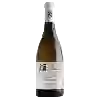
Cave de NolayPommard
In the mouth this red wine is a with a nice freshness.
This wine generally goes well with poultry, beef or veal.
Taste structure of the Pommard from the Cave de Nolay
Light | Bold | |
Smooth | Tannic | |
Dry | Sweet | |
Soft | Acidic |
In the mouth the Pommard of Cave de Nolay in the region of Burgundy is a with a nice freshness.
Food and wine pairings with Pommard
Pairings that work perfectly with Pommard
Original food and wine pairings with Pommard
The Pommard of Cave de Nolay matches generally quite well with dishes of beef, veal or game (deer, venison) such as recipes of beef with mustard, piccata with cheese or duck sleeves in cider.
Details and technical informations about Cave de Nolay's Pommard.
Discover the grape variety: Triomphe d'Alsace
An interspecific cross between the 101-14 Millardet and Grasset (Vitis Riparia x Vitis Rupestris) and the knipperlé, obtained by Eugène Kuhlmann around 1911 and marketed from 1921. It can still be found in England, the United States, Canada, the Netherlands and Belgium. It should be noted that there is a grape variety of American origin, fortunately white, bearing the name of triumph (concord x chasselas musqué).
Informations about the Cave de Nolay
The Cave de Nolay is one of of the world's greatest estates. It offers 57 wines for sale in the of Pommard to come and discover on site or to buy online.
The wine region of Pommard
The wine region of Pommard is located in the region of Côte de Beaune of Burgundy of France. Wineries and vineyards like the Domaine Leroy or the Château de Pommard produce mainly wines red. The most planted grape varieties in the region of Pommard are Pinot noir, Cabernet-Sauvignon and Gamay noir, they are then used in wines in blends or as a single variety. On the nose of Pommard often reveals types of flavors of cherry, truffle or clove and sometimes also flavors of game, cheese or rose petal.
The wine region of Burgundy
Bourgogne is the catch-all regional appellation title of the Burgundy wine region in eastern France ("Bourgogne" is the French name for Burgundy). Burgundy has a Complex and comprehensive appellation system; counting Premier Cru and Grand Cru titles, the region has over 700 appellation titles for its wines. Thus, Burgundy wines often come from one Vineyard (or several separate vineyards) without an appellation title specific to the region, Village or even vineyard. A standard Burgundy wine may be made from grapes grown in one or more of Burgundy's 300 communes.
The word of the wine: Trader-breeder
In the major wine regions, the négociant does not simply buy and resell the wines but, from very young wines, carries out all the maturing operations until bottling.














